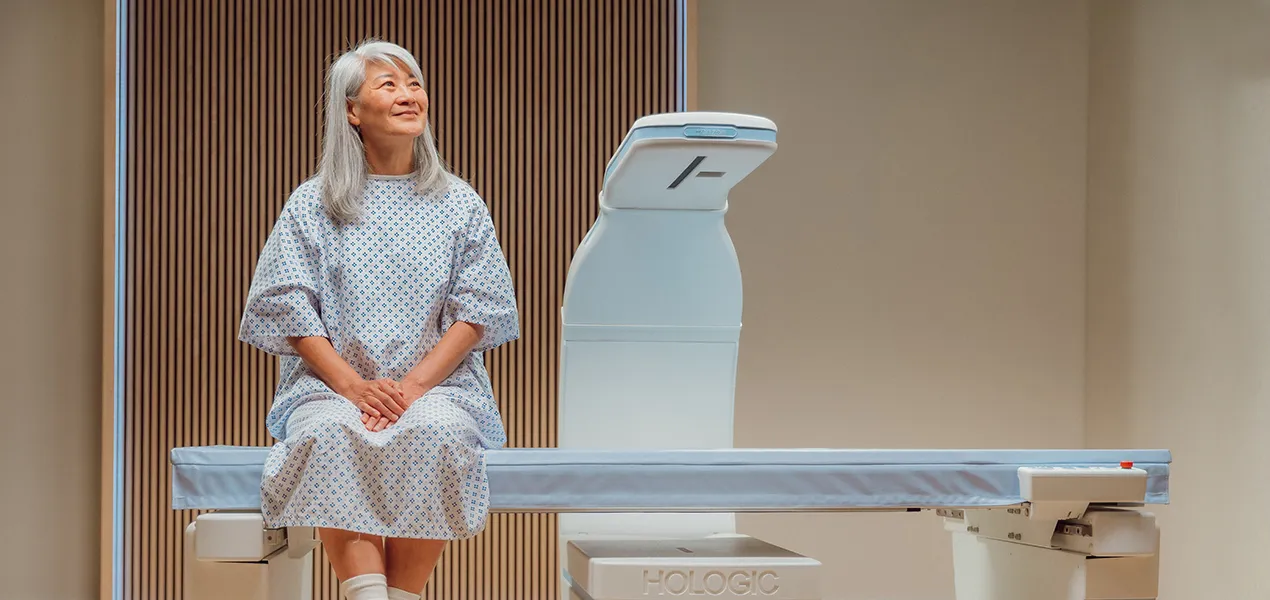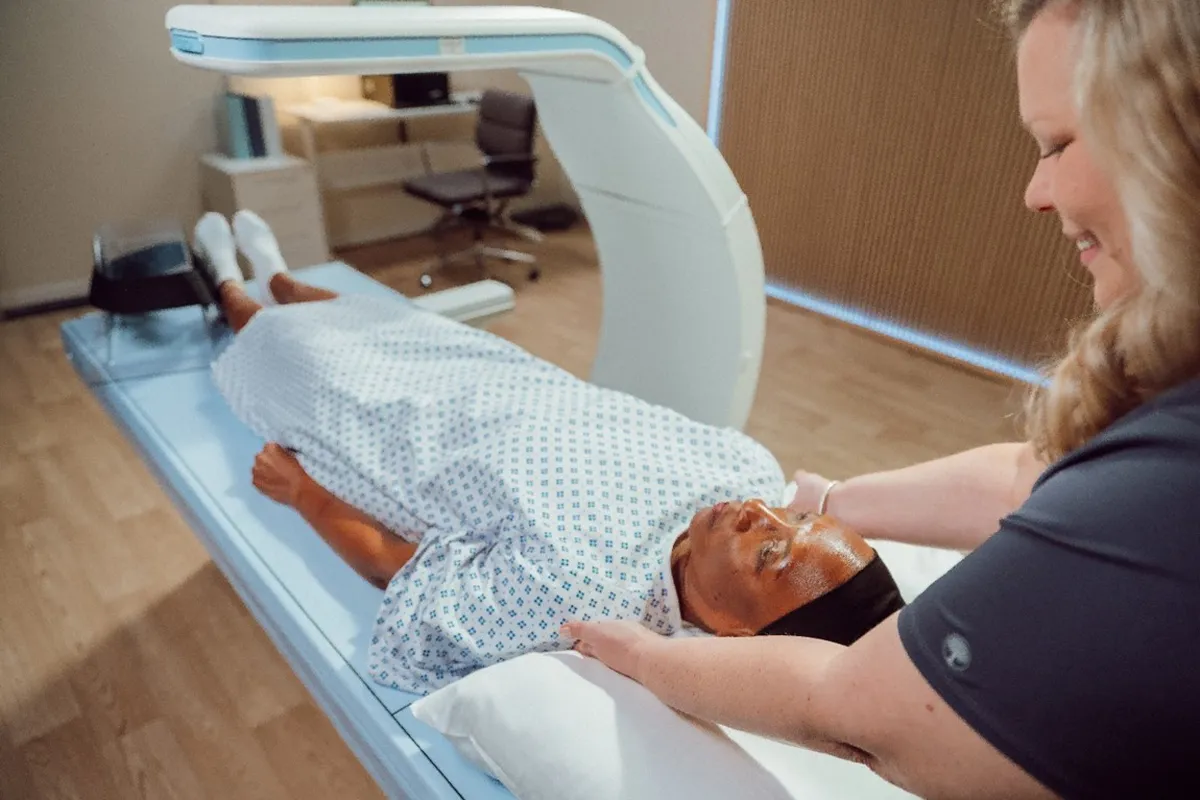What Is DXA and How Can It Help Women Protect Their Bones?

For protecting cervical health, we have HPV testing and Pap tests. To detect breast cancer when it's early stage and treatment may be more effective, regular mammograms are key. But what technologies are available to evaluate women’s bone health?
About 8 million women in the U.S. suffer from osteoporosis, a condition that causes bones to become brittle, porous and more likely to fracture or break. The risk of osteoporosis rises with age, and as many as one out of every two women over the age of 50 will break a bone because of it.1
Dual energy X-ray absorptiometry (also known as DXA or DEXA bone density scan), such as Hologic’s Horizon® DXA system, can help assess the risk of fracture and diagnose osteoporosis.2 This type of scan gives healthcare providers a comprehensive look at someone’s bone density, fracture risk and body composition — all important measures that can help determine the risk for injuries that can significantly affect a person’s quality of life and mobility.
How does a DXA scan work?
During a quick and painless scan, multiple X-ray beams are aimed at a patient’s bones, most often in the spine and hips. Healthy bones are loaded with minerals — making them dense and effective at blocking the X-rays — so only a small amount of X-ray energy gets through to the detector on the scanner's opposite side.
For bones that are less dense, X-ray beams can more easily penetrate through them. Lower bone density may indicate that a patient is at higher risk for fracture.

Over 80% of women who are eligible are not receiving osteoporosis screening with a DXA.3
What kind of information does a DXA scan provide?
After the scan, the software generates a report with both the scan image and information such as the T-score and the Z-score.
The T-Score is a numeric value used to help diagnose osteoporosis. It compares a patient’s bone density with that of a typical young adult, with a T-score at or above -1.0 classified as “normal.” A score between -1.0 and -2.5 is classified as osteopenia or reduced bone density, which could lead to osteoporosis, while a T-score less than -2.5 is classified as osteoporosis.
If the results suggest low bone density, various treatments such as supplements, diet changes, exercises or medications that can slow down bone loss may be suggested. Armed with the knowledge of a heightened risk of fracture, patients and their families can also take additional steps to prevent potentially devastating falls, such as adding railings to stairs and other living space changes.
Who can benefit from a DXA scan?
In the United States, women make up 80% of osteoporosis diagnoses,4 and the U.S. Preventive Services Task Force recommends that all women 65 and older get a DXA scan.
Because diseases like breast cancer and diabetes, certain medications, family history, smoking and other factors can put patients at a higher risk of fracture,4 some younger women may benefit from having a scan sooner. The decline in estrogen that happens during menopause can also significantly increase the risk of developing the disease.5
“We often hear osteoporosis referred to as the ‘silent’ disease because people don’t usually have any warning signs until they break a bone,” said Mark Horvath, President, Breast and Skeletal Health Solutions. “As we get older, it can become more difficult to heal from these injuries — only about half of people who have a hip fracture, for example, fully recover to their pre-fracture level of mobility — which is why screening and taking preventive steps are so important.”
Learn more about the Horizon DXA System: Horizon DXA System from Hologic — Bone Density Scan
1. National Osteoporosis Foundation. "What is Osteoporosis and What Causes It?" Accessed October 2023. https://www.nof.org/patients/what-is-osteoporosis/ 2. Source: Hologic. (n.d.). DXA Systems. Hologic. https://www.hologic.com/hologic-products/body-composition/horizon-dxa-system , accessed January 23, 2025. 3. Benes G, David J, Synowicz M, Betech A, Dasa V, Krause PC, Jones D, Hall L, Leslie L, Chapple AG. Race and Age Impact Osteoporosis Screening Rates in Women Prior to Hip Fracture. Arch Osteoporos. 2022 Feb 12;17(1):34. doi: 10.1007/s11657-022-01076-y. PMID: 35150320. https://pubmed.ncbi.nlm.nih.gov/35150320/ 4. U.S. Food and Drug Administration (FDA). “Osteoporosis.” Accessed October 2023. https://www.fda.gov/consumers/womens-health-topics/osteoporosis. 5. Mayo Clinic. “Osteoporosis - Symptoms and causes.” Accessed October 2023. https://www. mayoclinic.org/diseases-conditions/osteoporosis/symptoms-causes/syc-20351968.
The content in this piece is for informational purposes only and is not intended to be medical advice. Please contact your medical professional for specific advice regarding your health and treatment. This information is not intended as a product solicitation or promotion where such activities are prohibited. Because Hologic materials are distributed through websites, eBroadcasts and tradeshows, it is not always possible to control where such materials appear. For specific information on what products may be available in a particular country, please write to womenshealth@hologic.com.

